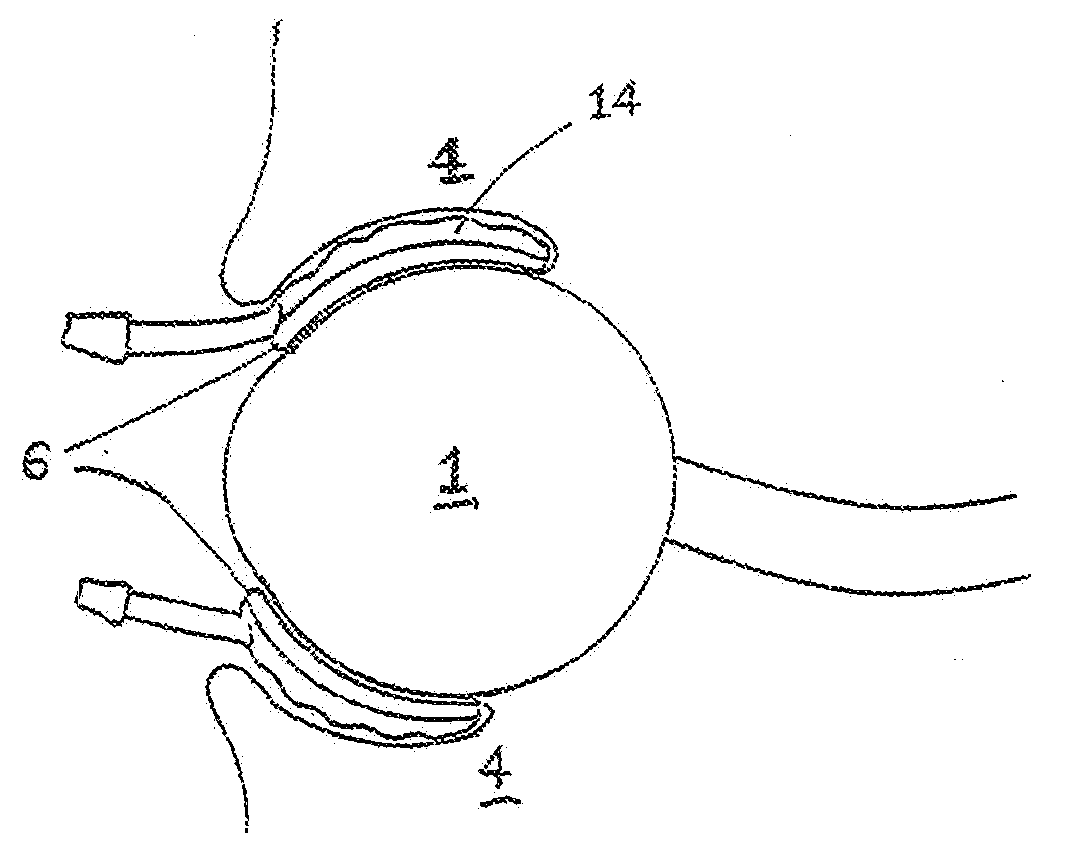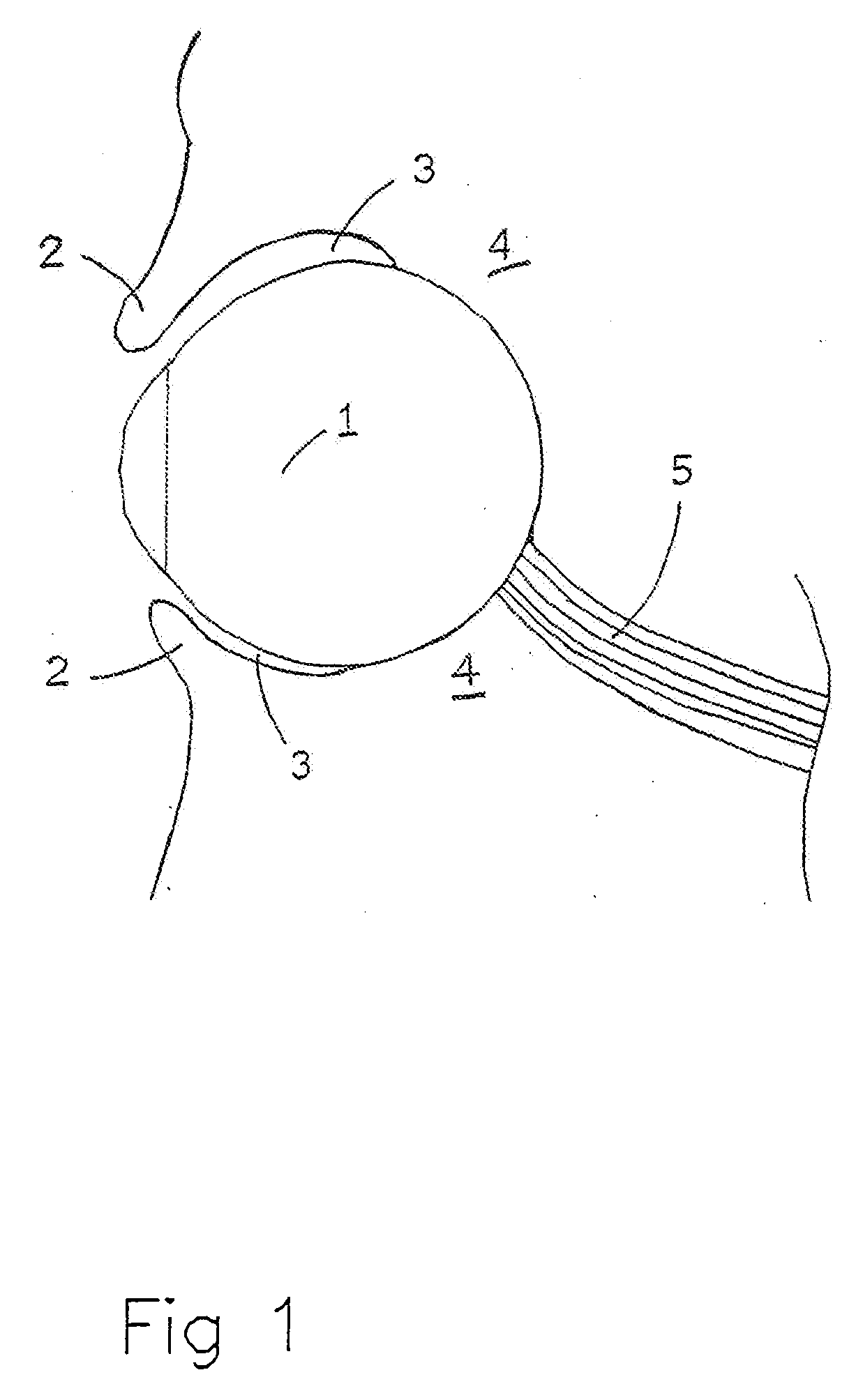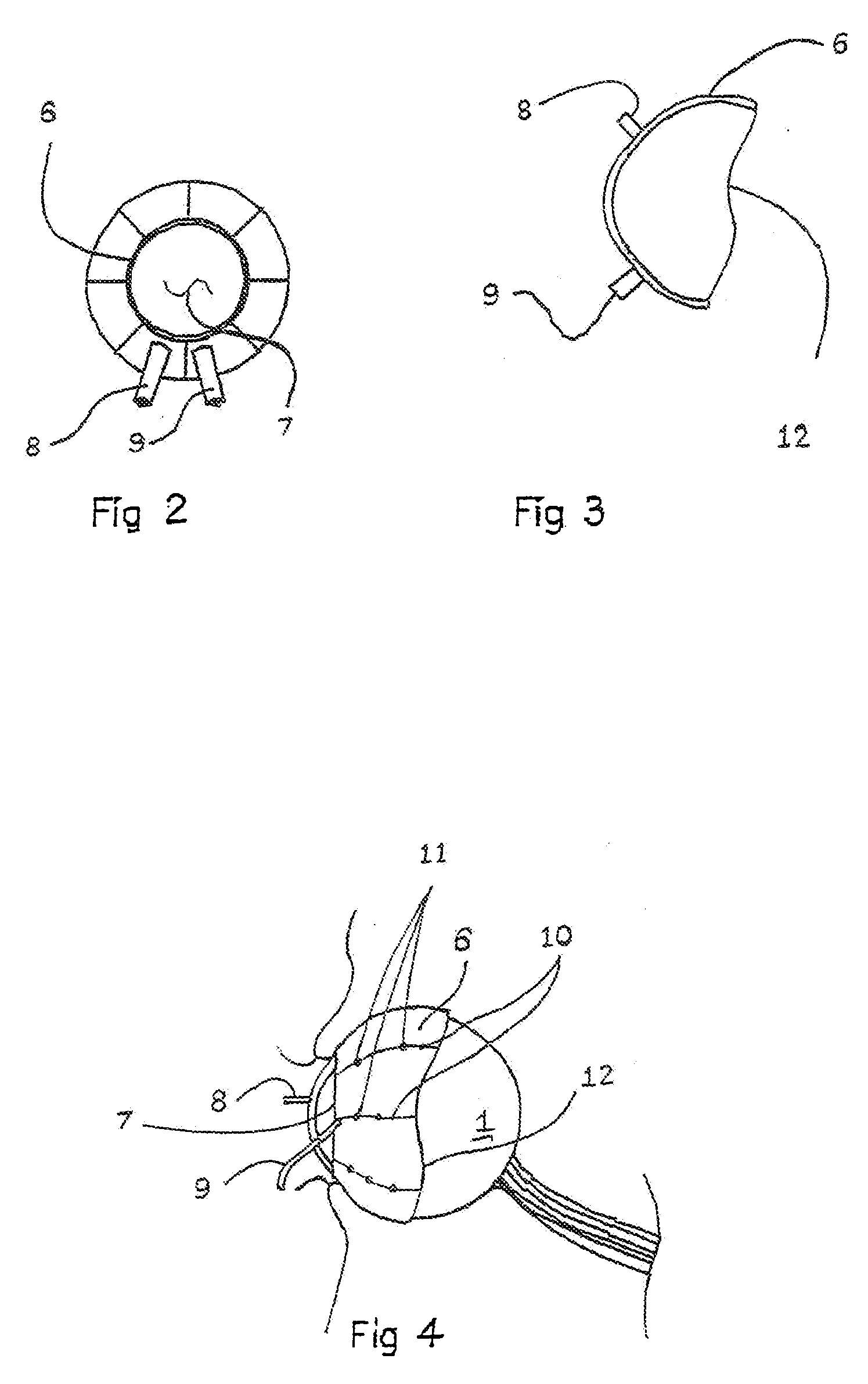Medical device and method for temperature control and treatment of the eye and surrounding tissues
a technology of temperature control and treatment of eye and surrounding tissues, applied in the field of medical devices, can solve the problems of irreversible damage, tissue death, optic nerve and retina/choroid tissues, etc., and achieve the effects of enhancing the treatment of eye and orbital tissues diseases, avoiding more invasive delivery routes, and facilitating the delivery of medicaments
- Summary
- Abstract
- Description
- Claims
- Application Information
AI Technical Summary
Benefits of technology
Problems solved by technology
Method used
Image
Examples
Embodiment Construction
[0080] In FIG. 1, the normal anatomy is shown of a side view of an eye 1, with upper and lower eyelids 2, upper and lower fornices 3, orbit 4 and optic nerve 5.
[0081] A thermal-regulating shell, or device, 6 in accordance with the present invention is illustrated in FIG. 2 (front view) and FIG. 3 (side view). As seen in FIG. 3 the cross-sectional view of the thermal-regulating shell 6 supports a posterior opening 12 suitable in size to allow the shell 6 to conform and slip over the eye 1.
[0082]FIG. 4 shows the general position of the device 6 when positioned onto the eye 1. The thermal-regulating shell 6 comprises a fluid cavity suitably designed to facilitate temperature controlled fluid to be circulated within the thermal-regulating shell 6.
[0083] The thermal-regulating shell 6 may include a suitably designed central anterior opening 7, a fluid entry port 8, and a fluid exit port 9, both in fluid communication with the shell 6. Other structures such as wires 10 or other suitabl...
PUM
 Login to View More
Login to View More Abstract
Description
Claims
Application Information
 Login to View More
Login to View More - R&D
- Intellectual Property
- Life Sciences
- Materials
- Tech Scout
- Unparalleled Data Quality
- Higher Quality Content
- 60% Fewer Hallucinations
Browse by: Latest US Patents, China's latest patents, Technical Efficacy Thesaurus, Application Domain, Technology Topic, Popular Technical Reports.
© 2025 PatSnap. All rights reserved.Legal|Privacy policy|Modern Slavery Act Transparency Statement|Sitemap|About US| Contact US: help@patsnap.com



